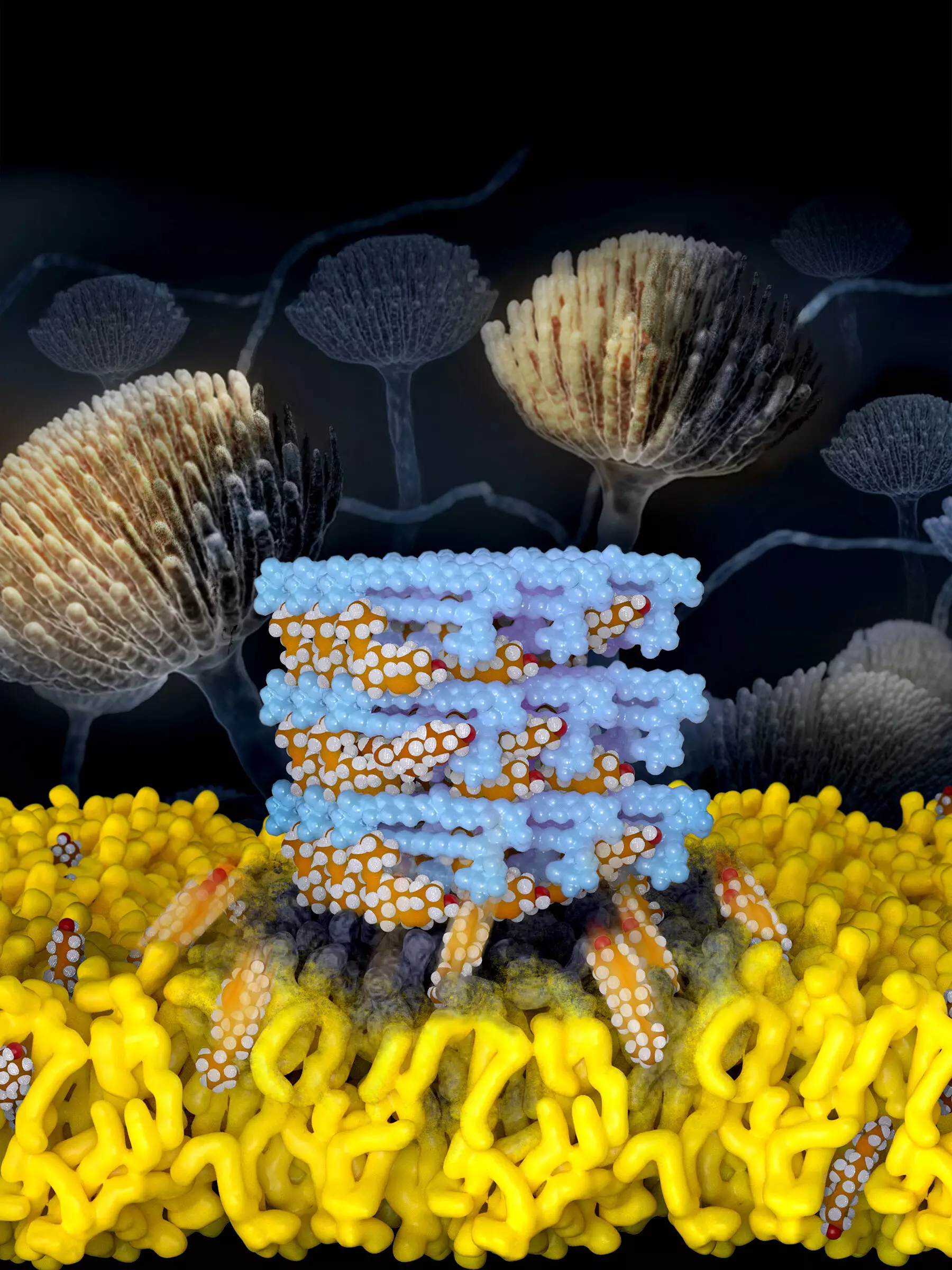Fungal infections pose a significant threat to public health, and their prevalence is only increasing. These infections have the potential to cause widespread harm, much like the COVID-19 pandemic. In an effort to address this growing crisis, researchers from the University of Illinois Urbana-Champaign and the University of Wisconsin-Madison have made strides in the development of a new antifungal molecule. By modifying the structure of the well-known antifungal drug Amphotericin B, they hope to enhance its effectiveness while minimizing its toxicity.
Amphotericin B, a naturally occurring compound produced by bacteria, is currently used as a last resort to treat fungal infections. While it demonstrates exceptional potency against fungi, it also poses a significant risk to human patients, particularly their kidneys. The challenge for researchers is to harness the drug’s effectiveness while circumventing its detrimental side effects.
Led by Dr. Martin D. Burke, an esteemed professor of chemistry and a medical doctor, the research team has dedicated years to studying Amphotericin B. In their quest to develop a derivative that can eliminate fungi without harm to humans, they adopted a building block-based approach to molecular synthesis. They collaborated with experts in molecular imaging tools, led by Professor Chad Rienstra at the University of Wisconsin-Madison, to uncover the mechanism by which the drug operates.
Understanding the Mechanism
Through their research, the teams discovered that Amphotericin B eradicates fungi by acting as a sponge that extracts ergosterol, a crucial component of fungal cells. However, the study also revealed that the drug harms human kidney cells by extracting cholesterol, the primary sterol found in humans. By determining the atomic-level structure of Amphotericin B’s interaction with ergosterol and cholesterol, the researchers gained valuable insights into its fungicidal properties.
Armed with this newfound knowledge, the Illinois team embarked on synthesizing derivatives with alterations to the region responsible for binding to ergosterol and cholesterol. Their goal was to reduce the drug’s interaction with cholesterol, thereby decreasing its toxicity while maintaining its efficacy. In collaboration with Dr. Timothy Fan, a veterinary clinical medicine professor, the researchers conducted a series of in vitro assays, cell culture experiments, and live mouse studies to evaluate the derivatives’ effectiveness and toxicity.
The Remarkable Potential of AM-2-19
From their experiments emerged a molecule known as AM-2-19, which displayed remarkable properties. Not only did it spare the kidneys from harm, but it also exhibited broad-spectrum efficacy against a wide range of clinically relevant pathogen species. The team tested AM-2-19 in various settings, including human blood and kidney cells, as well as in animal models of common and stubborn fungal infections. The results were highly encouraging, surpassing the efficacy of currently available antifungal drugs.
Amidst the excitement surrounding AM-2-19’s potential, Dr. Burke fondly recalled how Amphotericin B earned the nickname “ampho-terrible” due to its severe side effects. However, by separating its efficacy from its toxicity, the researchers hope to transform this powerful weapon against fungi into something truly remarkable. Although further clinical studies are required, the researchers have taken a significant first step towards realizing the potential of AM-2-19. Recently, it has entered Phase 1 clinical trials after being licensed to Sfunga Therapeutics.
The development of AM-2-19, a modified derivative of Amphotericin B, represents a promising breakthrough in antifungal research. By carefully manipulating the drug’s molecular structure, researchers have achieved a delicate balance between efficacy and toxicity. The potential benefits of AM-2-19, including its kidney-sparing properties and broad-spectrum efficacy, offer new hope in the battle against fungal infections. As this molecule progresses through clinical trials, the medical community eagerly awaits the day when it can be harnessed as a safe and effective treatment option for patients suffering from devastating fungal infections.



Leave a Reply